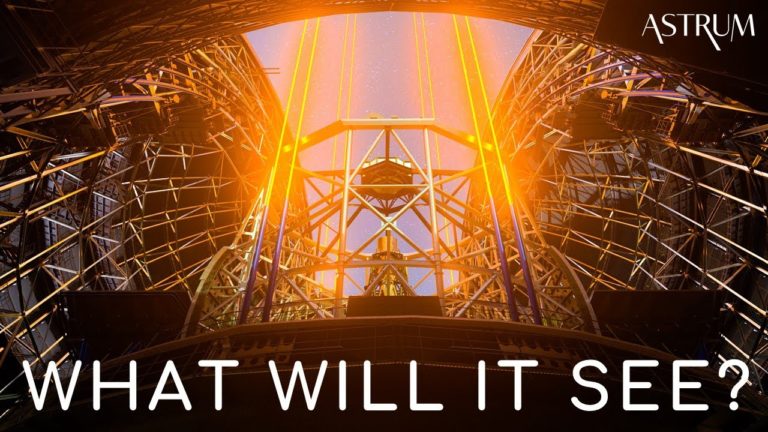Should the James Webb Space Telescope Be Worried? | The Upcoming Extremely Large Telescope
Years behind schedule and billions of dollars over budget, the James Webb Space Telescope (JWST) often finds itself the butt of jokes. From satirical Webcomics to more scathing criticism, the flagship project of NASA, the European Space Agency (ESA) and the Canadian Space Agency is an easy target. Yet many would argue that those delays and budget concerns are simply indicative of the telescope’s unprecedented scope and soaring ambitions. When it hopefully launches on October 31, it will be, by far, the largest and most sophisticated observatory ever sent into space. JWST will be poised to revolutionize our understanding of the universe from its lofty perch some 1.5 million kilometers from Earth, beyond the orbit of the moon. But what will the telescope actually do that justifies the decades of effort and expenditure to get it off the ground?
Last week we found out. On March 30 the Space Telescope Science Institute (STScI) in Baltimore revealed the proposals selected for the General Observer (GO) programs for JWST’s first year of operation, or Cycle 1. They constitute most of the observations the telescope will perform during Cycle 1, encompassing everything from looking for atmospheres on nearby rocky exoplanets to probing the universe’s earliest galaxies. The projects could start around this time next year, after a high-stakes post-launch deployment of the telescope’s giant 6.5-meter segmented mirror and multilayered sun shield, as well as a subsequent six-month phase of commissioning its instruments.
Once that prep work is done, Cycle 1 observations can properly begin. A portion of JWST’s opening studies—some 460 hours—will be devoted to Early Release Science (ERS) programs designed to put the telescope’s instruments through their paces. Nearly 4,000 hours will be dedicated to Guaranteed Time Observations (GTO) programs awarded to scientists who helped to build JWST’s hardware and software. But the majority of the observation time in the first year—approximately 6,000 hours—will be given to GO programs proposed by scientists around the world to take advantage of the telescope’s unique capabilities.
“This is a really big deal,” says Kenneth Sembach, director of STScI, which will run and operate JWST as it does the project’s predecessor, the Hubble Space Telescope. “The chance to be among the first accepted proposals in a brand-new observatory that has the potential to really revolutionize astronomy is something the community has been waiting for for a long time. These are pathfinders, the kinds of science proposals that are going to blaze the way forward for the observatory in the future.”
Webb will be the largest, most powerful and complex space telescope ever built and launched into space. It will fundamentally alter our understanding of the universe.
Do not forget to share your opinion with us to provide you with the best posts !




0 Comments